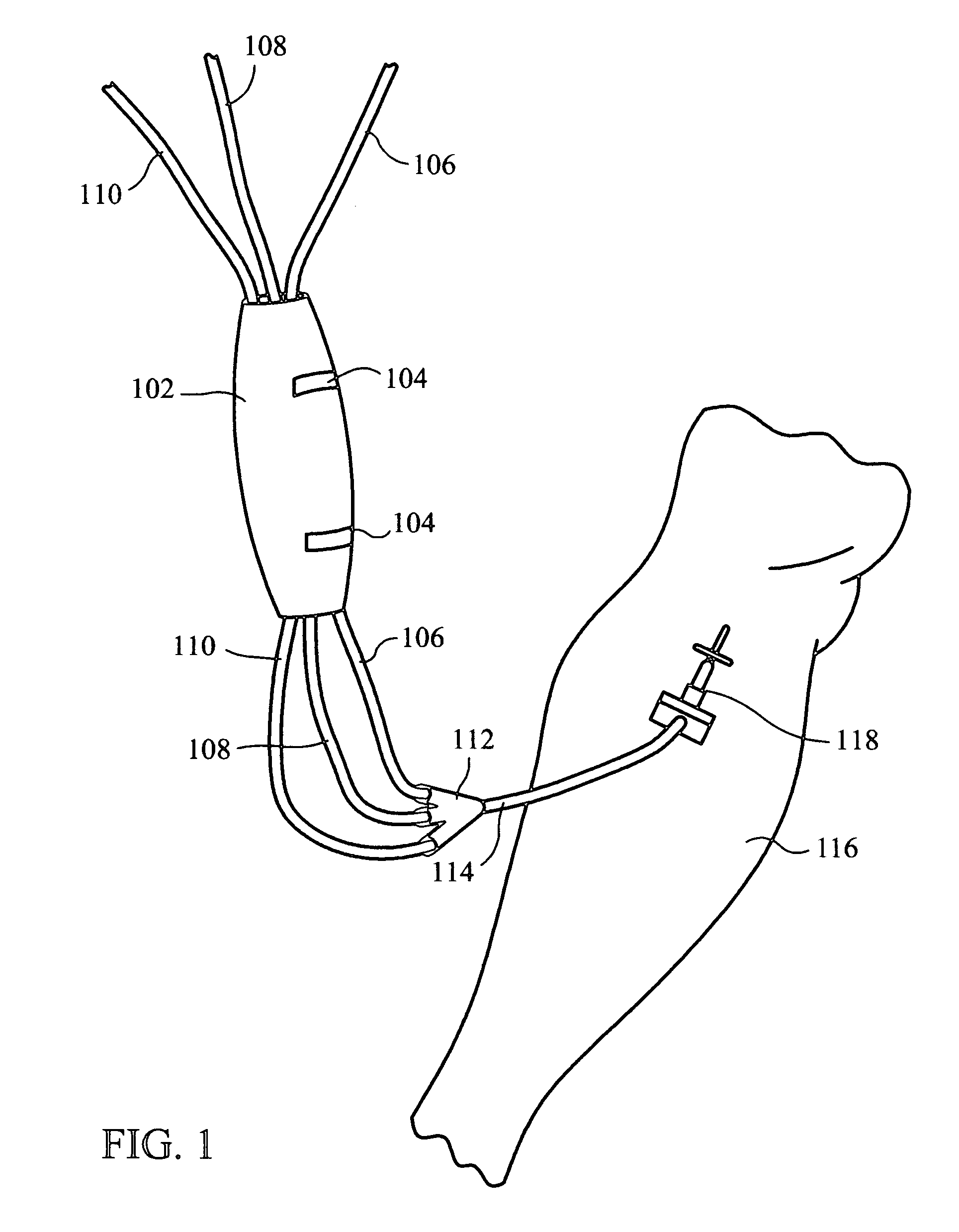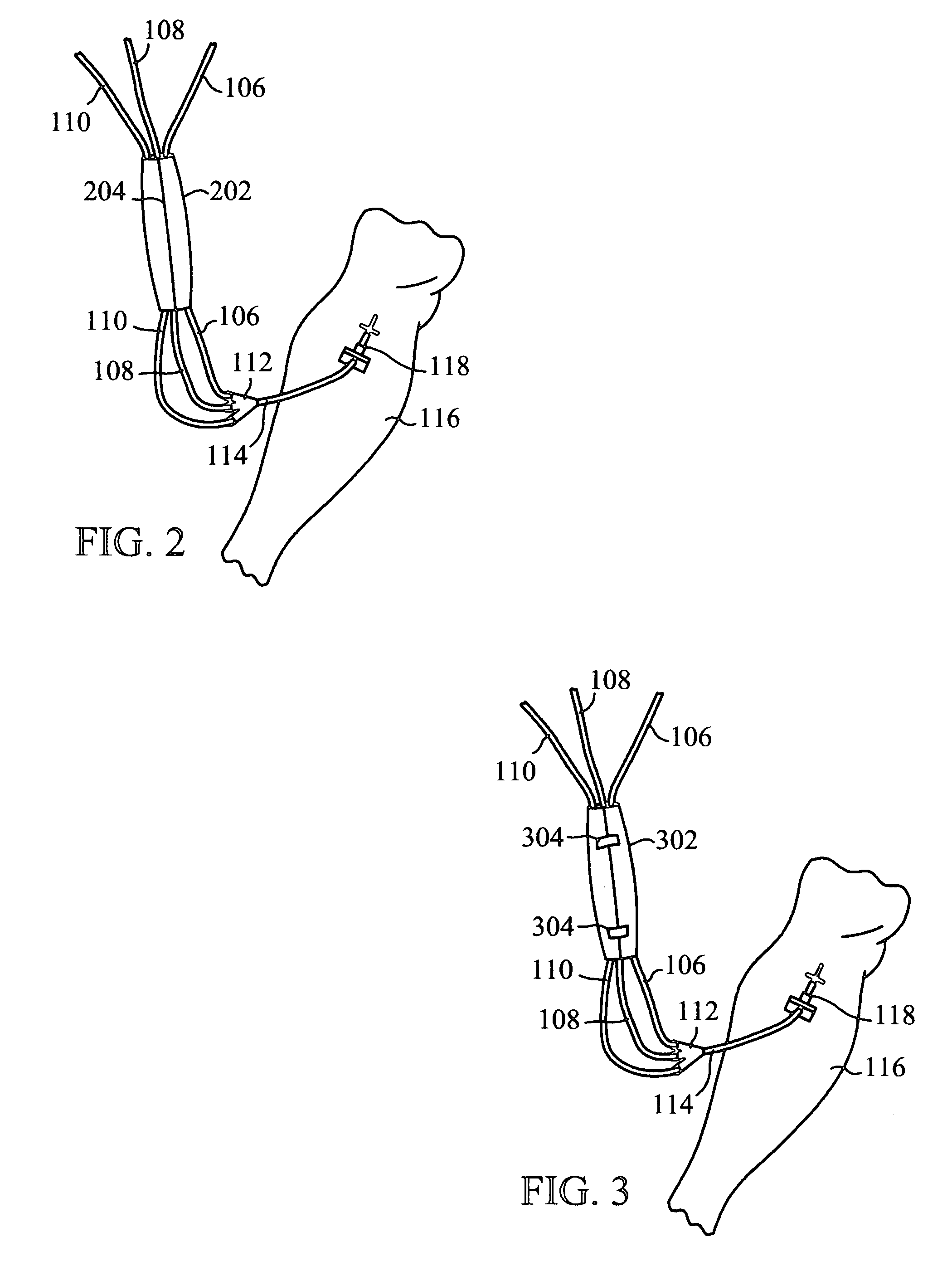Intravenous tubing protector and support system
a technology of protector and support system, which is applied in the field of intravenous (iv) therapy, can solve the problems of kinks causing physical breaks in the continuity of fluid communication between the patient's and the patient's, potentially dangerous disruption of fluid flow, and limited progress toward solving these problems, so as to prevent the tangling of the tubing
- Summary
- Abstract
- Description
- Claims
- Application Information
AI Technical Summary
Benefits of technology
Problems solved by technology
Method used
Image
Examples
Embodiment Construction
[0018] The tubing protector of the present invention is designed to support intravenous tubing for intravenous therapy procedures. The device serves to secure the tubing from being tangled, kinked or pulled out of the patient and is capable of encircling a variety of different numbers of tubing; however, it is envisioned that several different standard sizes of the tubing protector be employed to handle respective numbers and lengths of tubing. In addition, the tubing protector is designed to capture multiple intravenous tubing and consolidate the tubing together to prevent tangling and a potential kink that would thereby prevent the continued flow of the therapeutic liquid into the blood vessel of the patient.
[0019] This tubing protector may be designed to be employed in most usages with Velcro® type hook and loop fasteners or any other type of button, snap or similar fastening device or means. Velcro®-type hook and loop fasteners are especially suitable for medical applications b...
PUM
 Login to View More
Login to View More Abstract
Description
Claims
Application Information
 Login to View More
Login to View More - R&D
- Intellectual Property
- Life Sciences
- Materials
- Tech Scout
- Unparalleled Data Quality
- Higher Quality Content
- 60% Fewer Hallucinations
Browse by: Latest US Patents, China's latest patents, Technical Efficacy Thesaurus, Application Domain, Technology Topic, Popular Technical Reports.
© 2025 PatSnap. All rights reserved.Legal|Privacy policy|Modern Slavery Act Transparency Statement|Sitemap|About US| Contact US: help@patsnap.com



